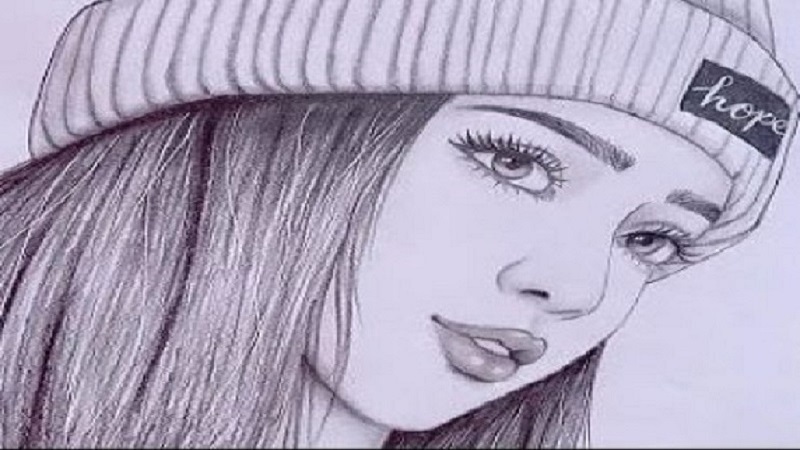Drawing people can be one of the most rewarding yet challenging aspects of art. Whether you’re a beginner or a seasoned artist, capturing the essence of a human figure requires practice, patience, and the right techniques. In this article, we’ll explore various methods, tips, and tricks to help you improve your skills in drawing:mklboeu0mnc=people. From understanding anatomy to mastering proportions, this guide will equip you with everything you need to create lifelike and expressive portraits.
Understanding the Basics of Human Anatomy
Before diving into the specifics of drawing:mklboeu0mnc=people, it’s essential to grasp the fundamentals of human anatomy. Understanding the structure of bones, muscles, and joints will help you create more accurate and realistic figures. Focus on studying the skeletal system, as it provides the framework for the body’s shape and movement.
Why Anatomy Matters in Drawing People
Anatomy is the foundation of figure drawing. Without a basic understanding of how the human body works, your drawings might appear stiff or unnatural. By learning the underlying structures, you can create more dynamic and believable poses, enhancing the overall quality of your artwork.
Mastering Proportions in Drawing People
One of the most critical aspects of drawing:mklboeu0mnc=people is getting the proportions right. Proportions refer to the relationship between different parts of the body, such as the head, torso, and limbs. Mastering proportions is key to creating balanced and harmonious figures.
The Importance of the Head-to-Body Ratio
A common method for measuring proportions is the head-to-body ratio. The average adult human body is about seven to eight heads tall. By using the head as a unit of measurement, you can ensure that the rest of the body is proportionate.
Capturing Lifelike Expressions
Expressions are what bring your drawings to life. Whether it’s a subtle smile or a dramatic frown, capturing the right facial expression is crucial in drawing:mklboeu0mnc=people. To achieve this, pay close attention to the movements of the eyes, mouth, and eyebrows.
The Role of Facial Muscles in Expressions
Understanding the facial muscles can help you depict emotions more accurately. For example, the zygomatic muscles are responsible for smiling, while the corrugator muscles control frowning. By studying these muscles, you can create more expressive and believable faces.
Exploring Different Drawing Styles
There are various styles to explore when it comes to drawing:mklboeu0mnc=people. Whether you prefer a realistic approach or something more stylized, experimenting with different techniques can help you find your unique artistic voice.
Realism vs. Stylization in Drawing People
Realism focuses on capturing every detail accurately, while stylization allows for more creative freedom. Both styles have their merits, and the choice ultimately depends on your artistic goals. Realism can be more challenging but rewarding, while stylization offers more flexibility and expression.
Practicing Gesture Drawing
Gesture drawing is a quick and effective way to improve your skills in drawing:mklboeu0mnc=people. This technique involves drawing the human figure in a series of quick, fluid motions, focusing on the overall form rather than the details.
Why Gesture Drawing is Essential
Gesture drawing helps you capture the movement and energy of a pose, making your drawings more dynamic and lifelike. It’s also a great way to loosen up and overcome the fear of making mistakes. The more you practice gesture drawing, the more confident and fluid your drawings will become.

Using References Effectively
Using references is a valuable tool in drawing:mklboeu0mnc=people. Whether you’re working from a live model, photographs, or online resources, references can help you achieve greater accuracy and detail in your work.
How to Choose the Right References
When selecting references, choose images that clearly show the pose, lighting, and details you want to capture. Avoid overly complicated images that might overwhelm you. Instead, start with simpler poses and gradually work your way up to more complex compositions.
Building Depth with Shading and Lighting
Shading and lighting are crucial elements in drawing:mklboeu0mnc=people. They help create depth and dimension, making your figures appear more three-dimensional. Understanding how light interacts with the human body will enhance the realism of your drawings.
Techniques for Effective Shading
When shading, focus on the areas where light and shadow meet. This will help create contrast and emphasize the form of the figure. Experiment with different shading techniques, such as hatching, cross-hatching, and blending, to achieve the desired effect.
Adding Details: Hair, Clothing, and Accessories
Details like hair, clothing, and accessories can add personality and context to your drawings. In drawing:mklboeu0mnc=people, paying attention to these elements can elevate your work and make it more engaging.
Tips for Drawing Realistic Hair
Drawing hair can be challenging, but breaking it down into sections can make it more manageable. Focus on capturing the flow and texture of the hair rather than getting lost in individual strands. Use varying line thickness and shading to create depth and movement.
Understanding Perspective in Figure Drawing
Perspective plays a crucial role in drawing:mklboeu0mnc=people. It helps you create the illusion of depth and space, making your figures appear more grounded in their environment.
Applying One-Point and Two-Point Perspective
One-point perspective is useful for simple compositions, while two-point perspective is ideal for more complex scenes. Practice drawing figures from different angles and perspectives to improve your spatial understanding.
Learning from Masters of Figure Drawing
Studying the works of master artists can provide valuable insights into drawing:mklboeu0mnc=people. Artists like Leonardo da Vinci, Michelangelo, and Norman Rockwell have made significant contributions to the art of figure drawing.
What Can We Learn from the Masters?
By analyzing their techniques, you can learn how to handle anatomy, proportions, and shading more effectively. Don’t be afraid to replicate their work as a form of practice—it’s a great way to internalize their methods and apply them to your own drawings.
Experimenting with Different Mediums
Exploring different mediums can expand your horizons in drawing:mklboeu0mnc=people. Whether you prefer pencils, charcoal, ink, or digital tools, each medium offers unique possibilities.
Pencil vs. Digital: Which is Better for Drawing People?
Both pencil and digital mediums have their strengths. Pencils allow for more tactile feedback and subtle shading, while digital tools offer more flexibility and the ability to easily correct mistakes. Experiment with both to find out which works best for you.
Common Mistakes to Avoid in Drawing People
Even experienced artists can make mistakes when drawing:mklboeu0mnc=people. Being aware of common pitfalls can help you improve your work and avoid frustration.
Top Mistakes and How to Fix Them
Some common mistakes include incorrect proportions, stiff poses, and overworking details. To fix these, take breaks to reassess your work, use references, and practice regularly. Remember that mistakes are part of the learning process.
The Importance of Consistent Practice
Improving your skills in drawing:mklboeu0mnc=people requires consistent practice. The more you draw, the better you’ll become. Set aside time each day to practice, even if it’s just for a few minutes.
How to Stay Motivated
Staying motivated can be challenging, especially when progress seems slow. To keep yourself engaged, set small, achievable goals, track your progress, and celebrate your improvements. Joining a community of fellow artists can also provide support and inspiration.
Incorporating Emotion into Your Drawings
Emotion is what truly brings a drawing to life. In drawing:mklboeu0mnc=people, capturing the emotional essence of your subject can make your artwork more powerful and relatable.
Techniques for Conveying Emotion
Use exaggerated facial expressions, dynamic poses, and strong contrasts in shading to convey emotion. Don’t be afraid to push the boundaries of realism to capture the feeling you want to express.

Conclusion: Mastering the Art of Drawing=People
Mastering the art of drawing:mklboeu0mnc=people is a journey that requires dedication, practice, and a willingness to learn. By focusing on anatomy, proportions, expressions, and details, you can create compelling and lifelike figures. Whether you’re drawing for fun or pursuing a professional career, the skills you develop through figure drawing will enhance your overall artistic abilities. Remember to experiment, make mistakes, and most importantly, enjoy the process of bringing people to life on paper.
FAQs
1.What are the basic steps to start drawing people?
Start by sketching simple shapes to represent different parts of the body, such as circles for the head and joints, and lines for the limbs. Focus on proportions, ensuring the head, torso, and limbs are correctly sized relative to each other. Gradually add details like facial features, clothing, and shading.
2. How do I improve my proportions when drawing people?
Understanding human anatomy is key. Practice drawing with the help of a reference, such as a photo or a live model. Break down the body into sections, like the head-to-body ratio (e.g., the human body is usually around 7-8 heads tall). Regular practice and studying the skeletal and muscular systems can also help you achieve better proportions.
3. What are some tips for drawing realistic facial features?
Start with guidelines to ensure proper placement of the eyes, nose, and mouth. The eyes should be halfway down the head, with equal spacing between them. The nose is placed halfway between the eyes and chin, and the mouth is typically a third of the way down from the nose to the chin. Focus on details like shading, which can add depth and realism.
4. How can I create dynamic poses when drawing people?
Use reference images or gesture drawing to practice dynamic poses. Focus on the flow of the body and the natural curve of the spine. Consider the weight distribution in the pose, which can make it look more realistic and lively. Experiment with foreshortening, where parts of the body appear larger or smaller due to perspective.
5. What materials and tools are best for drawing people?
Start with basic materials like pencils (HB for light lines, 2B-6B for shading), an eraser, and sketch paper. As you progress, you may want to experiment with different mediums like charcoal, ink, or digital tools (e.g., drawing tablets and software like Adobe Photoshop or Procreate). Each tool offers unique advantages, so choose based on your comfort and the style you wish to achieve.
